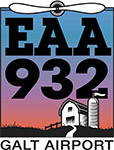Checklists are not just a “memory aid” for students and inexperienced pilots, they are an essential tool for enhancing safety and preventing accidents for all pilots. The purpose of checklists is to make sure specific actions are performed that are necessary for the safety of flight. For example, some typical after takeoff checklist items might be;
1. Landing gear…………….UP
2. Flaps ……………………..UP
3. Fuel pump ……………….OFF
4. Landing light …………….OFF
Most pilots can remember these four common items and if you fly only one airplane these actions may become routine. However, switching to another make and model of airplane may require an entirely different set of actions. If you regularly fly multiple airplanes it is more challenging to correctly recall the specific steps required for each separate airplane.
Consider also a situation where you become distracted while performing your normal procedures by memory. Continuing with the after takeoff procedure example, perhaps the gear does not retract immediately or you are momentarily preoccupied with looking for traffic, or a passenger asks you a question. There are countless circumstances that can take your attention away from the tasks you need to accomplish after departure, or at any other time.
Any unplanned interruption to the flow of performing your perfectly memorized procedures is exactly when something important will likely be missed, and this is a typical scenario that could lead to an accident.
Even without interruptions our memories are not perfect. Mental capacity is affected by fatigue, stress, fear, pain, dehydration, hunger, physical discomfort, lack of recent experience, and being in a hurry, among other things.
If you are not convinced, just browse any list of aviation accident and incident reports and you will find countless examples of experienced pilots who forgot to put the gear down, forgot to sump the fuel tanks, forgot to remove the gust lock, forgot to switch tanks, forgot to check the oil, forgot to remove the chocks, etc. All of these situations are easily preventable by the proper use of checklists.
Relying on memory to perform a set of tasks is perfectly fine as long as it is followed up by using a checklist to confirm that all of the required actions were indeed completed. Consistent use of checklists prevents mistakes and reduces the chance of accidents, especially in non-routine circumstances such as emergencies.
Beth Rehm, CFII

